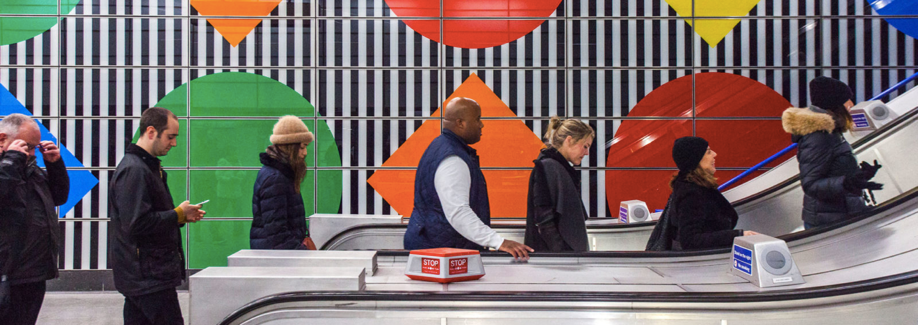02: The Language of Us.
02. The Language of Us:
Community in design - Intervention Architecture.
'The Language of Us' was an evening of talks by architects, designers and academics hosted by Anna Parker - founder of Intervention Architecture. Intervention Architecture (IA) are 'a RIBA Chartered architects practice, with a focus on high-quality design and collaborations with interesting clients and the intention to prove that size isn’t everything'. IA believe 'a huge impact can be made with a small space and with a small budget' and these values are very much in sync with my practice as a Birmingham based documentary photographer; doing what you've got with what you have, wherever you are.
Anna Parker began by introducing Yinka Danmole; a designer, producer and curator interested in art, urbanism and technology. Currently, he is a designer in residence at The Design Museum, London. His first participatory project, The Loft, involved occupying a disused shopfront-turned-artist studios and exhibition space to create public-facing interventions and installations. This was followed by curating Future Curious, a festival and initiative to support artists in exploring the future, at mac Birmingham. His current project is entitled Yarnsmith, a word made up in celebration of his current research being about language, specifically Nigerian languages, of which there are over 500!
Danmole credits his mentor as the reason for confronting passivity within participatory practice and describes a gathering of project participants which was supposed to be a discussion over lunch and ended up being a six hour salon of genuine exchangement and connectivity. This highlights the success of sharing thoughts and ideas over food as well as acknowledging co- authorship and ownership of participatory work.
Next, Alessandro Columbano, academic and producer of FutureMakers & Co:LAB, spoke about his research into post-war place structures, designed and built by children - a concept seemingly foreign to us in the age of over-caution. These images illustrate Columbano’s research and feature archival photographs from Denmark, Naples and Newtown Birmingham:
Fanfare in the community - young denizens of Birmingham’s Newtown cut loose with Mike Westbrook’s marching band, one of many spillover events from Birmingham Arts Lab, 1970 - which was a focus for 2018’s edition of Flatpack Film Festival.
Animazione Al Rione, Traione by Riccardo Dalisi 1971-75, Naples, Italy
Lastly, Harbinder Birdi an architect at Hawkins Brown began his talk by speaking jovially about the intimidation some experience when entering an art institution or white wall gallery, such as the Ikon Gallery in Birmingham, and the way his work combats notions of art being reserved for the elitist upper classes. His practice is all about bringing art outdoors through architecture and reclaiming architecture as something that should be undertaken with skill, creativity, joy and precision. Birdi references the way French conceptual artist Daniel Buren’s playful use of colours and simple shapes provide landmarks for commuters living in London and visitors to London, which creates a sense of identity in the otherwise anonymous tube station, such as Tottenham Court Road:
Hawkins Brown's collaboration with sculptor Rodney Harris led to the creation of brick reliefs forming part of the building fabric. They recall the history of the site and its community through objects, such as clothing, tools and objects of domestic life. The first piece to be installed was a larger than life officer’s jacket situated at a communal entrance:
This is an effective example of working with a community on the Burridge Gardens estate in London, rather than speaking for them. Ensuring their ideas were part of the new build apartments and represented their historical heritage.
My final thought is that finding solutions in problems and creativity amidst chaos seems to be a running theme of each of the speakers’ offerings, a trait common in economically challenging cities such as Birmingham. In particular, there remains this sibling rivalry between Birmingham and London, which we're constantly pitched against, despite London being a world capital.
I left The Language of Us with a sense of positivity in newfound knowledge that there are architects in this city, and beyond, that do hold residents' perspectives dear to them, as that's not what's been communicated to Birmingham's public by local council's constant misuse of investment, which seems to only benefit those who are already financially prosperous. Think: replacing our central library and brutalist architectural wonder with another retail and office offering. In fact, replacing all of the local libraries with one, large centralised, part-time vanity project that is more to the benefit of tourism and international conferences than everyday civic use. More on this to come...







